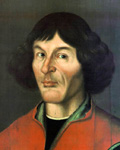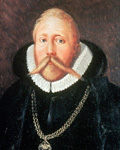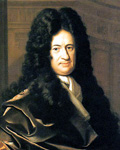- About MAA
- Membership
- MAA Publications
- Periodicals
- Blogs
- MAA Book Series
- MAA Press (an imprint of the AMS)
- MAA Notes
- MAA Reviews
- Mathematical Communication
- Information for Libraries
- Author Resources
- Advertise with MAA
- Meetings
- Competitions
- Programs
- Communities
- MAA Sections
- SIGMAA
- MAA Connect
- Students
- MAA Awards
- Awards Booklets
- Writing Awards
- Teaching Awards
- Service Awards
- Research Awards
- Lecture Awards
- Putnam Competition Individual and Team Winners
- D. E. Shaw Group AMC 8 Awards & Certificates
- Maryam Mirzakhani AMC 10 A Awards & Certificates
- Two Sigma AMC 10 B Awards & Certificates
- Jane Street AMC 12 A Awards & Certificates
- Akamai AMC 12 B Awards & Certificates
- High School Teachers
- News
You are here
Kepler: The Volume of a Wine Barrel - Kepler's Era
Johannes Kepler (1571–1630) was a German mathematician, astronomer, and astrologer, and a key figure in the 17th-century scientific revolution. He lived after Copernicus and supported the heliocentric model of the universe. Kepler worked with Tycho Brahe and used Brahe's remarkable observational data to make his most famous discovery, the three laws of planetary motion now known as Kepler's Laws. Newton later showed that Kepler's laws could be deduced from Newton's laws of motion and universal gravitation law.
As a mathematician Kepler discovered two new regular polyhedra, worked on the problem of close packing of equal spheres, computed logarithms, and found volumes of solids of revolution. Our main purpose here is to understand Kepler's contributions to the development of the calculus.
Kepler lived before Newton and Leibniz. During the 16th and early 17th centuries, the Greek mathematical masterworks, including Euclid's Elements, the Conics of Apollonius, and the works of Archimedes, were studied seriously. Numerous mathematicians refined the method of exhaustion and applied it to a wide variety of new quadrature (area) and cubature (volume) problems. Another point of interest was the determination of centers of gravity of solids. (On the importance of centers of gravity for the development of the calculus, see Baron, p. 90.) Renaissance mathematicians were more interested in new results and methods of discovery than in rigorous proofs. They freely used intuitive concepts of the infinite to produce infinitesimal methods for the solution of area and volume problems. Kepler and Cavalieri were two key mathematicians who helped invent these infinitesimal methods.
Kepler's Era Copernicus Brahe Galileo Kepler Descartes Cavalieri Fermat Newton Leibniz
Figure 1. Mathematicians who influenced Kepler or were influenced by Kepler, from Copernicus to Leibniz, arranged by the centuries in which they lived. Read more about any or all of them at the MacTutor History of Mathematics Archive. In the copy of this article, "Kepler: The Volume of a Wine Barrel," at MatematicasVisuales, this diagram is interactive, allowing you to read a very short biography of each mathematician by clicking on his name.
Roberto Cardil (MatematicasVisuales), "Kepler: The Volume of a Wine Barrel - Kepler's Era," Convergence (January 2012), DOI:10.4169/loci003499














